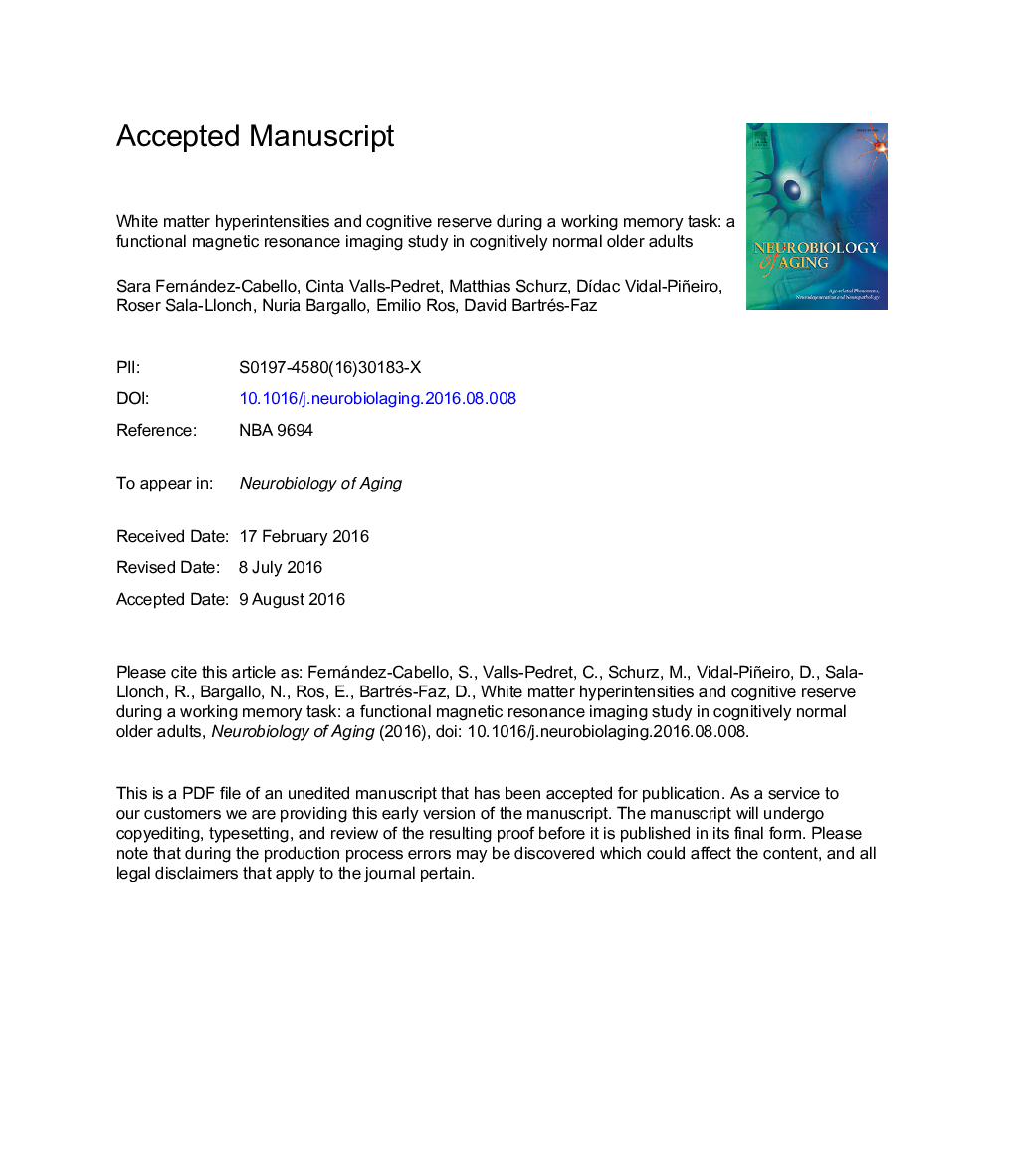| Article ID | Journal | Published Year | Pages | File Type |
|---|---|---|---|---|
| 4932905 | Neurobiology of Aging | 2016 | 36 Pages |
Abstract
Cognitive reserve (CR) models posit that lifestyle factors such as education modulate the relationship between brain damage and cognition. However, the functional correlates of CR in healthy aging are still under investigation. White matter hyperintensities (WMHs) are a common age-associated finding that impacts cognition. In this study, we used functional magnetic resonance imaging to characterize the patterns of brain activation during a working memory task in older participants with high and low levels of education (as a proxy of CR) and high and low WMH volumes. Ninety older volunteers (aged 63-76 years) and 16 young adults (aged 21-27) completed the study. We found that older adults with higher education had better working memory performance than their less educated peers. Among the highly educated participants, those with WMH over-recruited areas engaged by young volunteers and showed activation in additional cortical and subcortical structures. However, those with low WMH differed little with respect to their younger counterparts. Our findings demonstrate that the functional mechanisms subtending the effects of education, as a proxy of CR, are modulated according to the WMH burden.
Keywords
Related Topics
Life Sciences
Biochemistry, Genetics and Molecular Biology
Ageing
Authors
Sara Fernández-Cabello, Cinta Valls-Pedret, Matthias Schurz, DÃdac Vidal-Piñeiro, Roser Sala-Llonch, Nuria Bargallo, Emilio Ros, David Bartrés-Faz,
